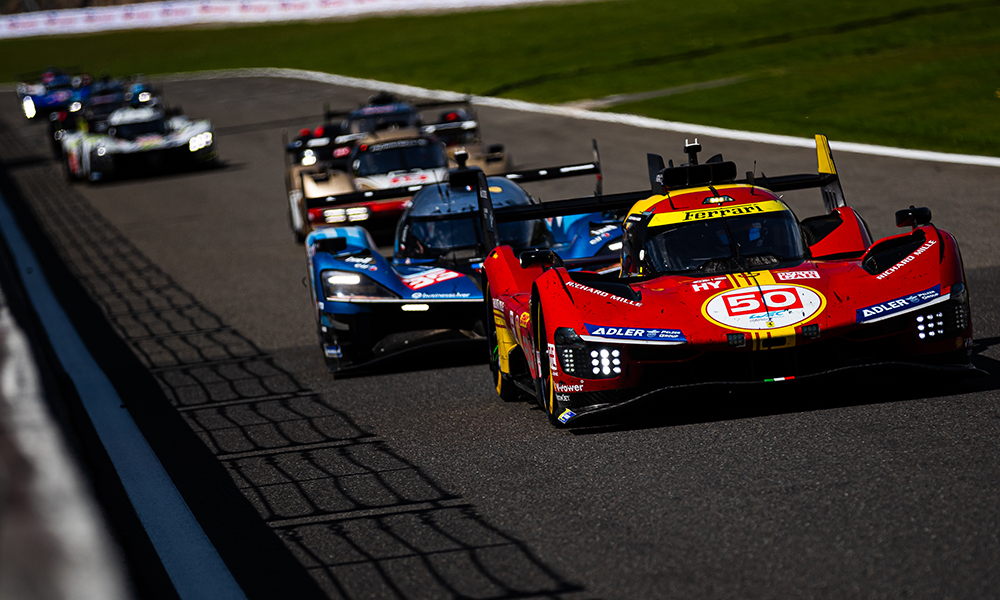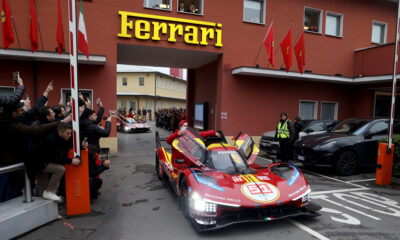
Photo: Javier Jimenez/DPPI
The Hypercar Balance of Performance for the 24 Hours of Le Mans has been released, confirming that the Power Gain system will be in use for the first time for the FIA World Endurance Championship centerpiece.
Tested by cars from multiple manufacturers in the Prologue test ahead of the season opener at Qatar in March, the system is designed to further equalize the field by changing a car’s maximum power above a certain speed threshold.
While the system was slated for introduction at the following round at Imola, the Power Gain, sometimes called ‘two-stage’ BoP, was not used for either race or the following round at Spa last month.
Toyota has voiced its support for the system on multiple occasions, with technical director David Floury stating that the marque was keen for it to be implemented in time for Le Mans despite not being trialled in a prior WEC race.
The relevant bulletin published by the FIA and ACO has confirmed that the system will debut at Le Mans, with the threshold set at 250 km/h (155.3 mph) instead of the 210 km/h (130.5 mph) that was listed on previous bulletins.
Seven of the nine Hypercars will have their power altered above the threshold, with four of those – namely the Alpine A424, BMW M Hybrid V8, Isotta Fraschini Tipo 6 Competizione and Toyota GR010 Hybrid – getting power increases of 0.9 percent.
The other three cars, the Ferrari 499P (-1.7 percent), Lamborghini SC63 (-1.6 percent) and Peugeot 9X8 (-0.7 percent), have seen reductions, while the remaining two cars, the Cadillac V-Series.R and the Porsche 963, will not have their power modified.
However, Ferrari and Lamborghini have both had their base power increased compared to the previous WEC race at Spa, with the 499P up 2kW to 508kW, and the SC63 up by 5kW to 519kW, the highest figure in the field.
The Porsche has also been given an extra 4kW, putting it at 511kW.
Apart from the Peugeot, which sees no change to its power, the remaining five cars have all had minor power reductions, with Toyota and Cadillac both getting decreases of 7kW to 508kW and 509kW respectively.
Alpine has dropped by 6kW to 507kW, the Isotta Fraschini is down 5kW to 515kW and the BMW has dropped 2kW to 508kW.
As previously outlined by the organizing bodies, Le Mans will run to a standalone BoP compared to previous WEC races, although there are still significant changes in minimum weight compared to the previous race at Spa.
Peugeot has been given the biggest break with the 9X8 set to run at 1047 kg, 18 kg lighter than before.
It’s a change that follows criticism voiced by the French manufacturer about its revised challenger’s lack of performance since its introduction at Imola.
Also with double-digit weight breaks are the Ferrari, down 10 kg to 1043 kg, the Isotta Fraschini, down 12 kg to 1048 kg, and the Toyota GR010 Hybrid, which drops 11 kg to 1053 kg but is now the heaviest car in the class.
The only car to have lost weight from Spa is the Alpine, which drops 7 kg to 1038 kg.
Cadillac’s V.Series-R remains the lightest car in the class at 1036 kg despite an increase of 6 kg, while the Porsche (+5 kg/1042 kg), Lamborghini (+4 kg/1039 kg) and BMW (+1 kg/1039 kg) have all seen smaller increases.
All five cars that are returning to Le Mans are running at lower minimum weights compared to the same event last season, and with less base power.

























